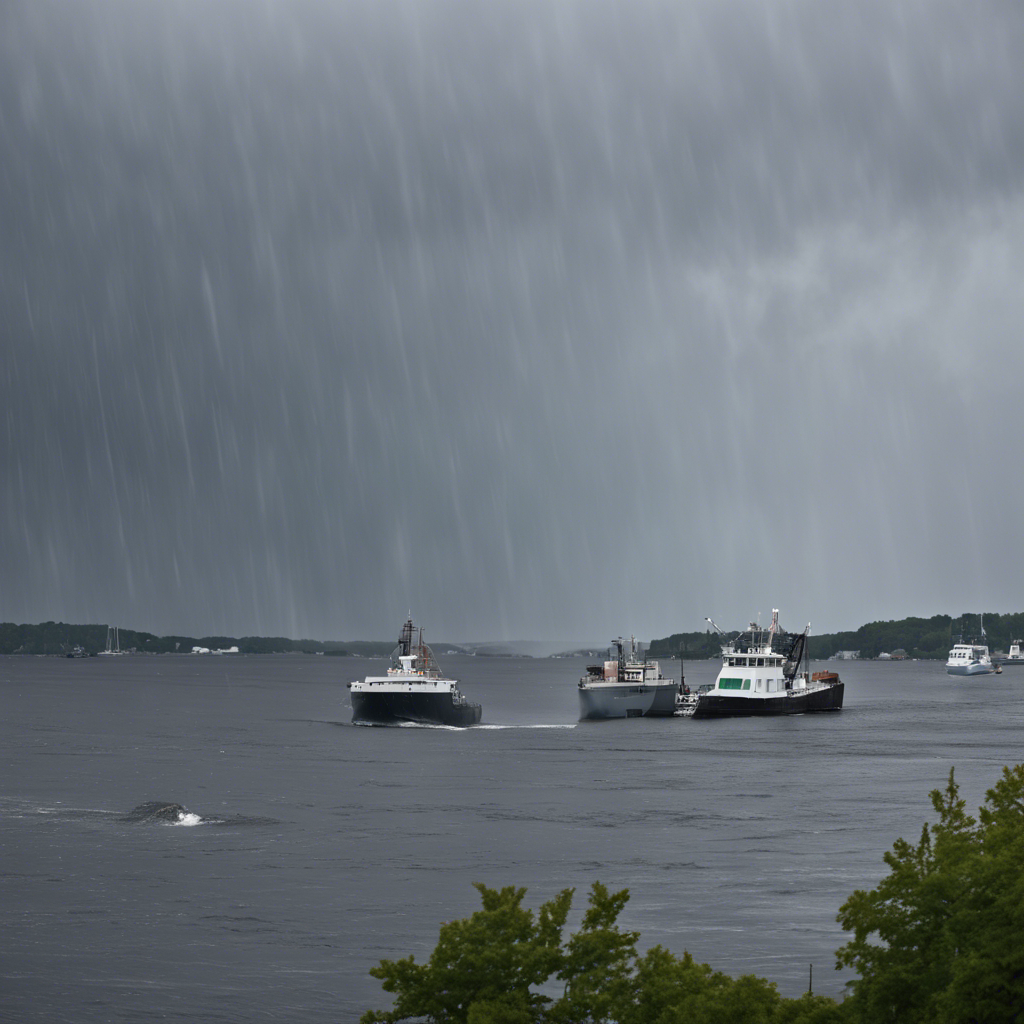Climate change and extreme rainfall events threaten the health of Casco Bay, impacting salinity levels and dissolved oxygen rates.
Casco Bay, a thriving ecosystem located in the fast-warming Gulf of Maine, is facing significant challenges due to heavy rains and rising ocean temperatures caused by climate change. The Friends of Casco Bay, a local environmental organization, has raised concerns about the impact of these factors on the bay’s salinity levels and dissolved oxygen rates. While Casco Bay remains relatively healthy, the near-shore waters are at risk from stormwater pollution and other threats. This article will explore the implications of heavy rains on the bay’s ecosystem and the efforts being made to mitigate these issues.
Accelerated Climate Change and its Effects on Casco Bay
Casco Bay is experiencing a warming trend, with temperatures increasing by approximately one degree every decade. This rise in temperature has led to significant changes in the bay’s ecosystem. Once-productive mudflats are now devoid of clams, eelgrass beds are disappearing, and lobstermen are forced to fish further from shore. These changes are occurring at an alarming rate, outpacing the natural adaptation of marine life and the efforts of local communities to respond.
The Impact of Heavy Rains on Salinity Levels
This year, heavy rains have contributed to low salinity levels in Casco Bay. According to Chief Scientist Mike Doan, the salinity level could not have been solely caused by direct rainfall. Instead, it is likely a result of massive amounts of stormwater runoff from heavily developed areas. Stormwater runoff carries pollutants such as forever chemicals, microplastics, and excess nitrogen. Excessive nitrogen can trigger the growth of phytoplankton, leading to the smothering of mud flats, closure of clam beds, and the decline of eelgrass beds.
Dissolved Oxygen Rates and the Health of the Bay
Dissolved oxygen is a crucial indicator of the bay’s overall health. As Casco Bay warms, the oxygen rates are expected to decline, as warm water cannot hold as much oxygen. Continuous sensors deployed in key areas have shown that the dissolved oxygen rate was consistently below the six-year daily average in several months of the year. While these rates do not pose an immediate threat to marine life, they raise concerns about the long-term health of the bay.
Implications for the Future
The effects of heavy rains and climate change on Casco Bay are expected to intensify in the future. The Northeast region of the United States, including Maine, is projected to experience more rainfall and extreme precipitation events. The Friends of Casco Bay plans to present their findings to the Maine Climate Council and the Maine Department of Environmental Protection. They advocate for updated regulations that require developers to prepare for more frequent and intense rainfall, promoting low-impact development and treating stormwater runoff before it is discharged into water bodies.
Conclusion:
Casco Bay, a vital ecosystem in the Gulf of Maine, is facing significant challenges due to heavy rains and rising ocean temperatures. The impact of climate change on the bay’s salinity levels and dissolved oxygen rates raises concerns about the long-term health and productivity of the ecosystem. Efforts are being made to address these issues, including the development of heat-resistant strains of eelgrass and the construction of oyster shell reefs. However, more comprehensive measures, such as updated stormwater runoff regulations, are needed to protect the bay and ensure its sustainability for future generations. The fate of Casco Bay serves as a stark reminder of the urgent need to address climate change and its impact on our natural environment.











